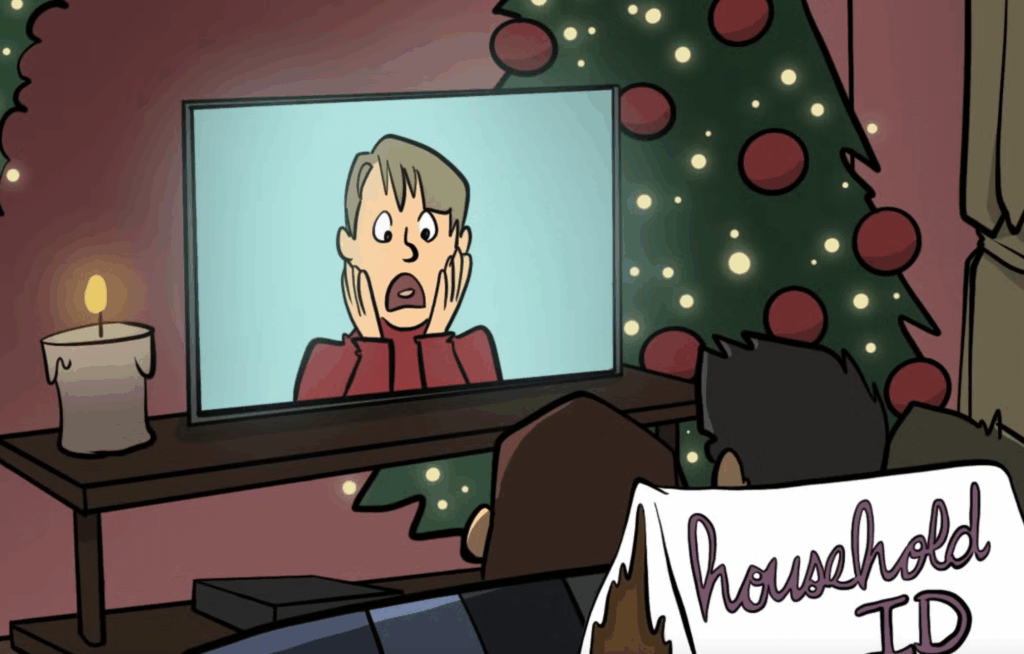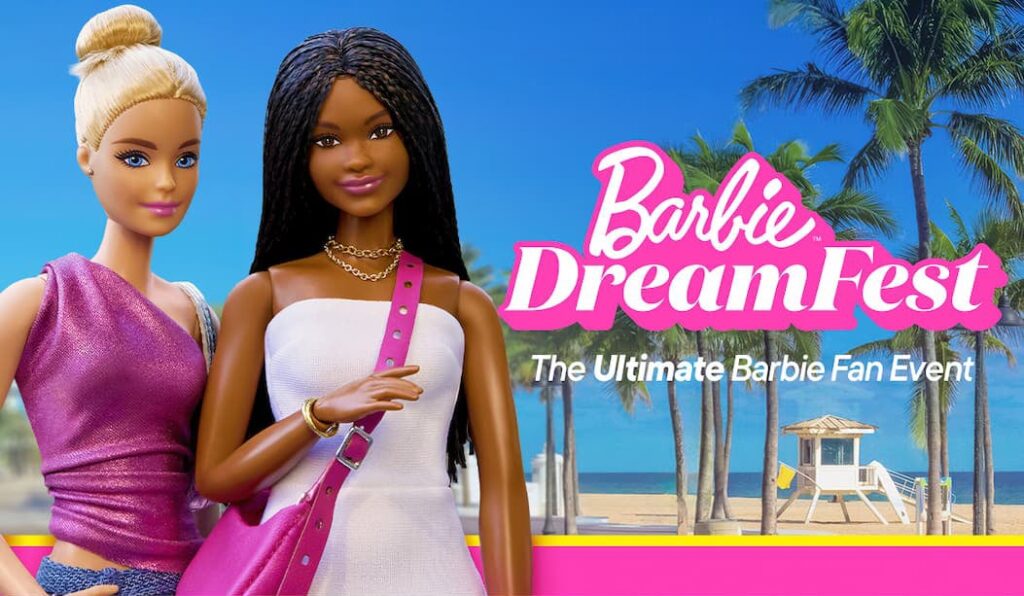Experiential marketing is bringing a flat-out assault on consumer senses. Is today’s buzzword the future of customer interaction?
The evolution of branding has taken marketers on an interesting ride through the years, a trek that has spawned new strategies, tactics, channels, and ultimately a deeper understanding of what customers really want.
The brand/customer relationship has grown increasingly complex since the Industrial Revolution created mass consumerism. Commodities once willingly purchased by all turned into goods customized to appease discerning consumer tastes. Then marketers added the concept of service to the mix, with consumers “often paying a premium for higher-value benefits and features,” says Tim Sanders, director of Santa Clara, CA-based Yahoo’s ValueLab marketing unit.
With “unique” services now imitated by every Tom, Dick, and Harry.com, marketers need to take another leap forward, and many have taken the step by creating a “brand experience.” Anchored in traditional event-marketing but containing healthy doses of “presence” and “lifestyle” branding measures, experiential marketing is fast gaining popularity among marketers looking for promotional campaigns that leave consumers with impressions they will never – ever – forget.
Defining the concept is no easy task. Many simply assign the term to elaborate event promotions, “but it shouldn’t be narrowly defined as an event,” says Mark Shapiro, ceo of St. Louis-based Momentum. “You don’t need to rent out Central Park for a concert to create an experience.”
Brand and agency experts agree that experiential programs share several factors: They’re creative and unique enough to stop consumers in their tracks. They employ multiple touchpoints to produce 360-degree exposure, delivering branded messages from various channels on many levels. They feature both educational and entertaining elements. Above all, they’re designed to be relevant to the target audience, fulfilling consumers’ desires for brand-related information or a fun, memorable activity. “If all those factors come together in the right way, an experiential marketing promotion leaves an indelible impression in the consumer’s mind,” says Michael Reisman, a principal with marketing agency Velocity Sports & Entertainment, Westport, CT.
Definitions may be hard, but not the explanation of why more brands are using it: Media fragmentation and cluttered sales channels make it harder to impact consumers with a focused message. “Companies are increasing use of this tactic out of pure necessity,” says James Gilmore, co-author of The Experience Economy (Harvard Business School Press, 1999). “Marketers are realizing that it’s becoming very difficult to differentiate their brands without an experience.”
Interactive programs reaching consumers simultaneously through relevant touchpoints let brands create a more intimate dialog with shoppers. “Companies are having trouble separating themselves from everybody else,” says Kevin Berg, president of Chicago-based agency KBA. “To make an educated choice these days, people need to experience a brand.”
Touch Me, Babe Experiential programs aren’t limited to the event arena, although most are found there – for now. Coca-Cola Co. sent a shock wave through the sports-sponsorship world in the late ’90s when it whittled away half its property portfolio to reinvest dollars in experience-based programs (November ’99 PROMO). Since then, the Atlanta-based carbonation king has done just that, attaching on-site and off-site interaction to the events and venues it sponsors. At Atlanta’s Turner Field baseball stadium, for example, Coke has a dedicated Coca-Coca Experience section where fans can mingle, sip soda, and dance around after home runs. “Experiential marketing lends itself to relationship-building,” says Scott McCune, Coke’s vp-worldwide sports. “In an interactive environment, consumers can touch, feel, and bond with your brand.”
Many have followed Coke’s lead. Verizon, the New York City-based telecom giant formerly known as Bell Atlantic, this month takes branding slope-side by invading six ski resorts with the two-day Verizon Luge Challenge. The company is looking to satisfy consumer quests for memorable activities by giving them professional-quality luge tracks carved into mountains. Participants suit up and fly down for practice runs in the morning; in the afternoon, bullish volunteers are split into four age/gender groups for competitions. The fastest lugers from each group get prizes.
Coaches and athletes from the USA Luge Team (which Verizon sponsors) will present tips and chalk talks while field staffers hit the mountain in hordes, reeling in lugers with hot chocolate and prizes as DJs blast music from the lodge below. “You have to be there to see it. People go crazy for this,” says Verizon director of corporate sponsorships Pat Hennebry. “We’re giving them something they probably would never get to experience on their own.”
Market-specific radio promotions begin two weeks prior to the events, which will take place on both coasts. At the bottom of the luge run, Verizon will construct an area where its long distance, wireless, and DSL arms can pass out service information. Velocity handles.
Last summer, Lincoln made the most of a new five-year, $20 million US Open tennis sponsorship. The Irvine, CA-based auto maker went beyond standard activation strategies (and costs) by converting an unused building at the USTA Tennis Center in New York City into an interactive Lincoln American Luxury Immersion. The structure’s interior featured soundstages, faux docks with real water, and images of tennis through the decades. Some 30,000 leads were collected from visitors strolling through the Immersion, which concluded in front of the new Blackwood luxury pick-up hybrid (September PROMO). New York City-based Impiric’s Irvine office handled. “It’s something very new for the consumer to be able to interact with a brand this way,” says Andrea Memenas, Lincoln’s marketing communications coordinator. “Experiential marketing is permeating our entire marketing mix.”
On the Road Again As often as not, event experiences hit the road looking for their targets. St. Louis-based Anheuser-Busch last month unveiled an upgraded version of its multi-million-dollar Bud World road show at the NFL Super Bowl in Tampa, FL. Billed as “the ultimate Budweiser experience,” the mobile monstrosity is part school, part museum, and part Hollywood extravaganza.
The new Bud World features three “experiences” for visitors: In the “World of Budweiser,” guests take an historical tour of the beer maker’s 136-year history. A stadium-seating, wide-screen “BudVision” theater, booming with surround-sound effects, then takes them on a sensory ride through the brand’s vast consumer reach, from hop fields in Idaho to NASCAR races in Atlanta. Once their eardrums stop reverberating from the 12-minute flick, guests head to the “Bud Brew House,” where real Anheuser-Busch brewmasters teach them about the brewing process. Visitors touch and smell ingredient samples, discuss a variety of topics, taste (where legal) the frosty stuff, and receive personalized “Certified Beer Master” wallet cards.
“We measure success by the presence we create, and we’re seeing a real benefit by creating an experience,” says Mark Greenspahn, Anheuser-Busch’s manager of special event marketing. “We’re meeting our customers one on one and finding out how best to build relationships with them.”
A spin through Bud World, which is constructed from three 53-foot trailers, takes 35 minutes. The tour will hit 120 cities this year and should see an estimated 130,000 guests come through its doors. “We’re trying to create more than an impression,” says Karen Branding, president of in-house marketing shop Busch Creative Services, St. Louis. “We’re trying to create a memory. And if successful, that’s powerful marketing.”
Pepsi-Cola Co.’s Fruitworks brand next month will try to conjure up some power of its own when it hits Spring Break locales for a follow-up to efforts begun last year. A Fruitworks “Free Ride” bus cruised busy strips picking up and dropping off party-minded college kids (who often can’t rent cars because of their age) at clubs and hotels. Passengers got free drinks, played games for prizes, rocked to music, and had their pictures taken with digital cameras. (Back at school, they could access the photos and e-mail them to friends.) Elsewhere, hotels distributed Fruitworks-branded city maps while nightclubs hosted sponsored contests and activities. Big Fat Promotions, New York City, handles. “We were interacting with consumers exactly where they interacted,” says Robin Kaminsky, Pepsi’s director of alternative beverages. “Experiential marketing is about showing customers that your brand wants to be a part of their lives.”
Sega North America, San Francisco, this summer will continue its successful Mobile Assault Tour, a traveling videogame competition that holds court at concert venues and crowded metro areas. Males 12 to 24 play games, register to win prizes, and party with celebrities. Winners fly to Las Vegas for championship rounds and a shot at the $75,000 top prize. On the Internet, mobileassaulttour.com connects visitors to retail-specific promotions, tracks the competitions, and unites players around the nation. Marketing Mix, St. Louis, handles.
Last summer, the goal of registering 100,000 people for the new SegaNet Internet service was easily surpassed. “Adding experiential flavors to SegaNet’s marketing turned out to be a people magnet,” says Sega director of consumer promotions Heather Kashner.
Here, There, Everywhere A memorable experience can be generated in a variety of ways. In fact, some marketing cognoscenti assign the “experiential” tag to media advertising that is evocative enough to spark consumer imaginations. Others question whether a passive activity such as ad viewing can truly generate a deep-enough impression (an argument that will sound familiar to any marketing veteran).
Guerrilla campaigns, for one, are getting lively boosts from experiential tacks. Coca-Cola continues the introduction of its Dasani water brand by hitting the streets and pampering women with massages as well as samples (via CMI, Totowa, NJ). San Francisco-based Levi’s is reincarnating last fall’s 10-city Style@Work program, where stylists invade white-collar districts to offer fashion tips and wardrobe makeovers. Sales jumped 30 percent in each market visited. RPMC, Los Angeles, handles.
“Experiential marketing is no buzzword. These programs – bottom line – get a product into the hands of relevant consumers who want to try it,” says Andrew Jaffe, associate brand manager with Stamford, CT-based Norelco, which ran a guerrilla effort last summer bringing its Hue Razor to a younger user base (via Javelin, St. Louis).
Sweepstakes and game prize pools are also strong experience fodder, giving winners everything from rides in jet fighters and roles in movies to a one-day visit from celebrity chef Emeril Lagasse to serve as school cafeteria cook (a recent Food Network effort via Ryan Partnership, Westport, CT). Beck’s North America, Stamford, CT, tapped Third Eye Blind last fall for exclusive concerts consumers could attend only by winning tickets through a sweeps (December PROMO). Miller Brewing Co. runs its Blind Date program via 10 events annually. Sweeps winners end up in a nightclub for a concert with a major band – the identity of which isn’t revealed until the curtain goes up (GMR Marketing, New Berlin, WI, handles).
“I’m waiting for the day when someone wins the chance to kick the winning field goal at the Super Bowl,” says Joe Owens, president of San Mateo, CA-based marketing agency Owens & Associates.
Toronto’s Molson Exports recently concluded a Molson Outpost campaign that took 400 sweeps winners on an outback-themed weekend. Participants roughed it with camping and extreme activities. Atlanta-based GEM Group’s Toronto office handled. “We’re trying to offer things consumers would not be able to experience without us,” says Molson marketing manager Sylvie Levesque. “These people can’t help but remember us now.”
Virtual experiences are possible, too. Web marketers are using exclusive features, customized content (often designed from consumer feedback), and live or taped events to give consumers the impression of one-to-one service. Reynoldsburg, OH-based Intimate Brands attracts millions of Web watchers when it puts the annual Victoria’s Secret lingerie fest online. Kraft Foods, Glenview, IL, operates a multi-brand site with cooking and recipe engines to help moms put Kraft products right into the oven. “Helping a consumer make dinner each night is providing an experience,” says Jeff Shirley, category promotion manager with Kraft’s e-commerce division.
Stored Value Retailers have understood the concept for quite some time. Seattle-based Starbucks Co., in fact, based its business model on the in-store experience long before the word became buzz-worthy. The decor, the music, and the demeanor of the “baristas” behind the counter have made a visit to the local Starbucks as much a part of many work days as water-cooler confabs and boardroom meetings. “We don’t spend any money on brand advertising,” says senior vp-marketing Engle Saez. “It’s crucial to have an environment that creates an experience. We use our stores as our marketing.”
The wave of “retailtainment” which flourished in the late ’90s is getting an upgrade. Santa Fe Springs, CA-based Vans, Inc. goes beyond mere merchandising with a growing fleet of Vans Skate Parks, 50,000-square-foot mall “stores” housing huge indoor skateboard tracks (complete with instructors) along with merchandise shops. “The problem with many retailers is that they forget the necessity of offering an experience. To us, it’s brand first, retail second,” says Neal Lyons, president of Vans’ retail division. “These parks went from a `Let’s try not to lose too much money on this’ idea to a huge profit center.”
St. Louis-based Build-A-Bear, Inc. is successfully growing a chain of stores on the very premise of letting shoppers create their own plush toys. “It’s amazing to see consumers paying to manufacture their own product,” says author Gilmore.
Paramus, NJ-based Toys “R” Us is working on a retail experience for the record books. This year, the chain will open a 100,000-square-foot flagship store in New York City’s Times Square with a block-long facade and a functional 3.5-story ferris wheel inside. A dozen attractions will separate the store’s merchandise by theme and category. In the girl’s section, for instance, a life-size dollhouse will lure in little ladies. “A video wall is not an in-store experience,” says Warren Kornblum, Toys “R” Us executive vp-worldwide marketing and brand development. “You have to use the entire store to drive the experience.”
Staffers will be called “cast members” (a la Disney), and entertainment partners will tie in for co-promotions and exclusive merchandise offers. The ambitious concept could redefine in-store marketing for the future. “In an increasingly competitive environment, a brand has to be more than what it’s been in the past,” says Keith McCracken, chief operating officer of GEM Group. “It has to touch people’s lives.”
Where’s the Payoff? But not every marketer is foaming at the mouth over experiences. For one thing, they’re not cheap. “It’s labor-intensive to create these types of experiential programs,” admits Velocity’s Reisman. “But recall numbers get a rise from it, and if people remember your brand as they go about their lives, it’s worth it.”
Many brands are cautious to commit the additional expenses, arguing that more-traditional promotion tactics are still the main drivers of the ultimate goal: increased sales. “People are force-feeding this buzzword into something that’s more than it should be,” says Bill Carmody, chief marketing officer at San Francisco-based promo shop Seismicom. “Until experiential marketing sells product, it won’t catch on. The touch and feel of marketing is great, but it shouldn’t replace objectives and strategies.”
Nobody is saying it should. In fact, agencies and brand marketers unanimously agree that experiential programs should just be part of the mix, not the be-all, end-all. “Marketing programs are becoming incomplete without experiential components,” says Jay Speery, director of sports specialties with Stratham, NH-based Timberland, which is currently taking its PRO label to construction sites around the country via Boston agency Triple Dot. “Show up at a mall in Arkansas with windsurfing simulators and a miniature mountain, and you’ll see how dynamic your marketing can be. But remember, integration is crucial.”
As for measurable results, progress has been slow. “The growth of experiential marketing is dependent on emerging ways to measure results,” says KBA’s Berg. Some agencies already track results through polling, surveys, and other research. “We see retrial rates and repurchase numbers increase with experiential marketing,” says Lee Heffernan, president of promo shop CMI. GMR Marketing, New Berlin, WI, tracks its campaigns with on-site surveys, lead-generation programs, and image-lift analysis.
Many brands are taking on the research themselves. Lincoln’s research, for example, shows the Immersion increased purchase consideration among visitors by 47 percent. The auto maker also experienced the highest unaided recall of all on-site sponsors at last year’s US Open. Beck’s is developing “more scientific ways” to track the success of its fall 2001 exclusive-concert promotion, says executive vp-marketing Rainer Meyrer.
Once results can be certified, there should be no stopping the growth of experiential marketing. Until then, the question of whether it is a soon-to-be-discarded buzzword or a strategy for the ages will remain debatable.
But there’s no debate that consumers are becoming more resistant to mass marketing, and brand managers need better ways to reach them. “Client demand for experiential marketing will increase proportionately to their disappointment with traditional tactics,” says Ryan Partnership vp George Shea. “Marketers should start their experiences now, before their competition does,” adds Yahoo’s Sanders. “It’s harder to follow someone and easier to lead.”
That’s advice marketers should never – ever – forget.






